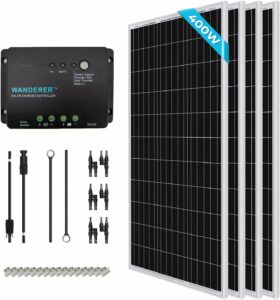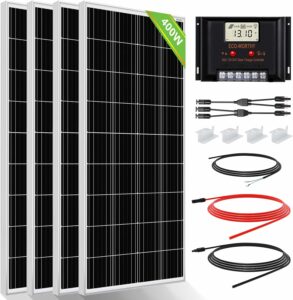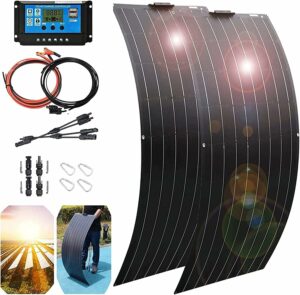WHICH IS BETTER: SOLAR PANEL CONNECTIONS IN SERIES OR PARALLEL
Introduction
Solar energy is a cornerstone in transitioning to sustainable and renewable power sources.
As more individuals and businesses embrace solar technology, the question of how solar panels should be interconnected becomes pivotal.
The debate between series and parallel connections has sparked considerable interest in the renewable energy community.
In this exploration, we delve into the intricacies of solar panel connections, seeking to unravel whether it’s better to connect them in series or parallel.
Provo Green Products embodies a beacon of trust in sustainable discoveries, offering choices that enhance your life and leave a positive mark on our planet.
Leveraging extensive expertise in manufacturing, construction, and various trades, we provide a solid foundation for sustainable living.
Our meticulous research process guarantees that our information about each product is precise and current, allowing you to make informed decisions.
Whether your interest lies in solar products, electric bikes, or other eco-friendly alternatives, our commitment to credibility ensures you have access to dependable insights, guiding your journey toward a more sustainable lifestyle.
Provo Green Products is your go-to destination for finding the right green products for your lifestyle.
Disclosure: As an Amazon Associate, we may earn from qualifying purchases. This does not affect the product pricing whatsoever.
Series Connection: Pros and Cons
In solar panel configurations, the series connection is a popular choice with its advantages and considerations.
Understanding the pros and cons of connecting solar panels in series is essential for anyone aiming to harness solar energy effectively.
Pros:
- Increased Voltage Output:
- One of the primary benefits of series connections is the cumulative increase in voltage. When solar panels are connected in series, the voltages of individual panels add up, resulting in a higher overall system voltage. This can be advantageous in higher-voltage scenarios, such as long-distance power transmission or charging systems that demand elevated voltage levels.
- Efficient Use of Inverters:
- Series connections are often more compatible with central inverters, which convert DC power from solar panels into AC power for use in homes or businesses. Central inverters are known for their efficiency, and series connections can maximize their effectiveness by providing a consistent and elevated voltage for conversion.
- Simplified Wiring:
- Series connections typically involve more straightforward wiring configurations compared to parallel setups. This simplicity can lead to cost savings regarding materials and installation labor.
Cons:
- Susceptibility to Shading Issues:
- One of the significant drawbacks of series connections is their vulnerability to shading issues. If one panel in the series is shaded or experiences a reduction in sunlight, it can impact the entire series, diminishing the overall energy output. This can be critical, especially in installations where shading is unavoidable.
- Mismatched Performance Impact:
- Series connections are only as strong as their weakest link. If one panel in the series underperforms due to manufacturing defects, aging, or other factors, it can drag down the performance of the entire series. This makes the system more susceptible to the impact of panel-to-panel variations.
- Limited Flexibility in System Design:
- Series connections may limit the flexibility in system design, particularly when expanding an existing solar array. Adding more panels might require adjustments to the entire series, making modifications more complex than parallel configurations.
Series connections offer advantages in specific situations, such as those requiring higher voltage output and compatibility with central inverters.
However, the susceptibility to shading issues and the impact of performance mismatches should be carefully considered in the decision-making process.
As we explore the world of solar panel connections, it’s crucial to weigh these pros and cons to determine whether a series connection aligns with the unique requirements of a solar energy system.
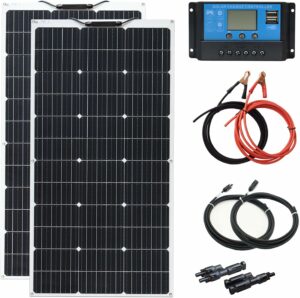
Parallel Connection: Pros and Cons
Parallel connections present an alternative approach to solar panel configurations, bringing their own set of advantages and challenges to the table.
Delving into the pros and cons of connecting solar panels in parallel is crucial for those seeking to optimize their solar energy systems.
Pros:
- Mitigation of Shading Impact:
- One of the notable advantages of parallel connections is their ability to mitigate shading issues. Unlike series connections, where shading on one panel affects the entire string, parallel connections allow each panel to operate independently. This means that if one panel is shaded or underperforms, it doesn’t affect the entire system’s performance.
- Enhanced Performance Monitoring:
- Parallel connections facilitate individual monitoring of each solar panel. This level of granularity enables easier identification of any underperforming panels, simplifying maintenance and troubleshooting. Enhanced performance monitoring is particularly valuable in larger solar installations, where identifying and addressing issues promptly is essential.
- Flexibility in System Design and Expansion:
- Parallel configurations offer greater flexibility in system design and expansion. Adding more solar panels to a parallel-connected system is straightforward, requiring minimal adjustments to the existing setup. This scalability benefits those planning to expand their solar array over time.
Cons:
- Complex Inverter Requirements:
- Parallel connections may necessitate using more complex inverters, such as microinverters or power optimizers. These devices convert DC power from individual panels into AC power. While they offer benefits like shading tolerance and enhanced monitoring, they can be costlier and require additional installation considerations.
- Potential Current Mismatch:
- In parallel connections, each panel operates at its current, which can lead to current mismatch issues. If not properly managed, this mismatch can result in power losses and impact the system’s overall efficiency. Additional measures, such as diodes or power optimizers, may be required to address this concern.
- Higher Wiring Complexity:
- Parallel configurations often involve more complex wiring compared to series connections. Managing multiple parallel strings and ensuring proper balancing can be challenging, especially in larger installations. This complexity can contribute to increased installation and maintenance costs.
In summary, parallel connections offer advantages such as shading tolerance, individual panel monitoring, and system scalability.
However, the decision-making process should carefully consider the complexity of inverters, potential current mismatch issues, and higher wiring complexity.
As we navigate the nuances of solar panel connections, understanding these pros and cons becomes instrumental in making informed choices tailored to the specific needs of a solar energy system.
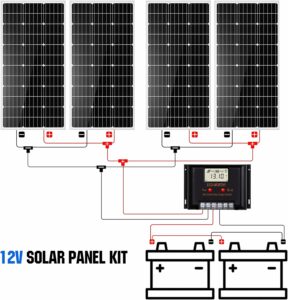
Performance Comparison
A comprehensive performance comparison becomes crucial as we weigh the merits of series and parallel connections for solar panels.
The efficiency and effectiveness of a solar energy system hinge on various factors, and understanding how these configurations fare in real-world scenarios is essential for making informed decisions.
- Influence of Shading:
- Series Connection: Susceptibility to shading issues can significantly impact the overall energy output. When one panel in the series is shaded, it affects the entire string, leading to potential efficiency losses.
- Parallel Connection: Mitigating shading impact is a critical advantage in parallel connections. Each panel operates independently, reducing the impact of shading on the overall system.
- Resilience to Performance Variability:
- Series Connection: A series-connected system is a performance that depends on the weakest panel in the string. If one panel underperforms due to manufacturing variations, aging, or other factors, it can affect the entire series.
- Parallel Connection: Individual monitoring in parallel configurations allows for easier identification of underperforming panels. This granularity enhances system resilience, as the impact of a single panel’s variability is confined to that specific unit.
- System Scalability:
- Series Connection: Expanding a series-connected system may require adjustments to the entire string, potentially complicating adding more panels.
- Parallel Connection: Parallel configurations offer greater flexibility in system design and expansion. Adding more panels is straightforward, making parallel setups more scalable for future growth.
- Compatibility with Inverters:
- Series Connection: Series configurations often work well with central inverters, known for their efficiency. This compatibility is advantageous for systems prioritizing a straightforward and centralized approach to power conversion.
- Parallel Connection: Parallel setups may require more complex inverters, such as microinverters or power optimizers. While offering benefits like enhanced monitoring, these inverters can add complexity and cost to the system.
- Overall System Efficiency:
- Series Connection: The cumulative increase in voltage can be beneficial in specific scenarios, but susceptibility to shading and performance variability may impact overall system efficiency.
- Parallel Connection: While parallel configurations excel in mitigating shading impact and accommodating performance variations, the complexity of inverters and potential current mismatch issues can affect overall efficiency.
The performance of solar panel connections is a nuanced interplay of various factors.
The specific goals, constraints, and characteristics of the solar energy system should guide the choice between series and parallel configurations.
As we navigate this performance comparison, it becomes evident that there’s no one-size-fits-all solution, and the optimal choice depends on a careful consideration of the unique requirements and priorities of each installation.
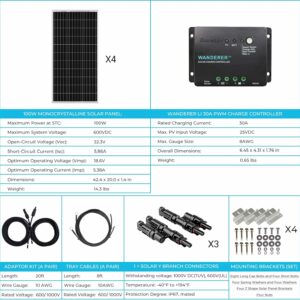
Choosing the Right Connection
The decision to connect solar panels in series or parallel is a pivotal step in designing an efficient and reliable solar energy system.
The optimal choice depends on many factors, and understanding how these considerations align with specific goals and constraints is crucial for making informed decisions.
- System Goals and Priorities:
- Voltage Requirements: If the application demands higher voltage, series connections may be more suitable due to their cumulative voltage increase. Consider the specific voltage requirements for your intended use, such as inverter compatibility or long-distance power transmission.
- Shading Sensitivity: If shading is a concern in your installation, parallel connections offer an advantage by mitigating the impact on the entire system. Assess the shading conditions at the site and evaluate the potential consequences on performance.
- System Size and Scalability:
- Expansion Plans: Consider the scalability of your solar energy system. If you anticipate future expansion, parallel connections provide greater flexibility, allowing for the addition of more panels with minimal adjustments to the existing setup.
- Space Constraints: Evaluate the available space for your solar array. The physical layout of your installation may influence the choice between series and parallel configurations, especially if space is limited.
- Monitoring and Maintenance:
- Individual Monitoring: If granular monitoring of each solar panel’s performance is a priority, parallel connections offer the advantage of individual monitoring. This can simplify maintenance by allowing for the identification and replacement of underperforming panels more efficiently.
- Simplified Maintenance: Consider the maintenance complexity associated with each configuration. While series connections may have more straightforward wiring, parallel configurations involve more sophisticated inverters and wiring, potentially affecting maintenance efforts.
- Cost Considerations:
- Inverter Costs: Evaluate the cost implications of inverters. Series configurations may align with central inverters, which are often more cost-effective. Conversely, parallel setups may require microinverters or power optimizers, which can be pricier.
- Wiring Costs: Assess the wiring requirements for each configuration. While series connections may have more straightforward wiring, parallel setups could involve more complex wiring configurations, impacting material and installation costs.
- Geographic and Environmental Factors:
- Sunlight Availability: Consider the sunlight conditions at your location. If shading is minimal, the disadvantages associated with series connections may be less pronounced. Conversely, parallel configurations may offer a more reliable solution in areas with frequent shading.
- Climate Considerations: Evaluate the climate of your location, including temperature extremes and weather patterns. Certain configurations may perform better in specific climates, influencing the durability and efficiency of the solar energy system.
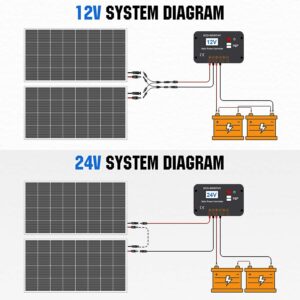
Conclusion
Ultimately, choosing between series and parallel connections is not a one-size-fits-all decision.
It requires carefully evaluating your solar energy system’s unique characteristics and goals.
By weighing factors such as voltage requirements, shading sensitivity, scalability, monitoring needs, cost considerations, and environmental factors, you can make an informed decision that aligns with the specific demands of your solar installation.
As you embark on the journey of choosing the proper connection, remember that the success of your solar energy system hinges on a thoughtful and tailored approach to configuration selection.
Stay in Touch!
I’am a dedicated entrepreneur with many years of experience and an integrity-driven individual who is highly motivated to succeed. Leveraging extensive expertise in manufacturing, construction, and various trades, we can provide a solid foundation for sustainable living. Our meticulous research process guarantees that our information about each product is precise and current, allowing you to make informed decisions. A deep understanding of business operations empowers me to consistently implement improvements that result in ongoing success. Visit site.

